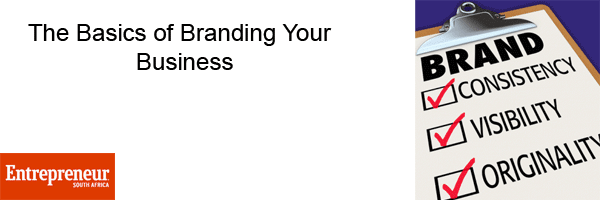SME owners are legends at wearing multiple hats to keep tabs on and develop each part of their company – a skill they master quickly to stay afloat. That said, building a brand is one of the first steps they need to take. Often, this can’t be done single-handedly.
If you, as a business owner, are concerned that you lack the knowledge to create a brand image and build your brand efficiently then don’t worry, you’re not alone. We’ve put our heads together to come up with a mini guide to give the SME owner a good start to branding your business.
Branding objectives
Whether you’re looking to create a new brand identity or rework an existing one, you need to work out what the business objectives behind the branding exercise are.
Brands without a purpose are flimsy and inherently directionless – they tend to come across as having more flash than substance and can easily take a business in the wrong direction.
Brands that perform a clear business function are much less likely to fall prey to inconsistency over time, as there is a bigger picture in which those brands find their reason for being.
Kulula is a great example. Its brand identity is playful in its interpretation which signals fun and enjoyment. It is also bright and highly noticeable thus building awareness of the brand. Additionally, it is simple and unfussy signalling the key point of Kulula’s affordability.
Building your brand structure
Once you’ve figured out your objectives, structure your brand with the following five ideas in mind. From experience, we’ve found this leads to better brands time and again.
1.Engagement
It’s a busy world out there, full of clutter and interruptions. A good brand engages with people, it gets their attention and holds their interest. It delights and informs them. It is a welcome addition to their lives instead of an intrusion.
2.Relevance
A good brand is also relevant to the target market. It conveys information that is applicable and useful to resonate with the right people in a meaningful way.
3.Authenticity
Your brand needs to deliver on its promises – explicit and implied. Keeping it real is always a winning strategy. Never pretend to be something you’re not.
4.Consistency
A consistent brand, which follows the brand values at all times, makes a focused impression and reinforces the principles of the brand. It signals professionalism and attention to detail. An inconsistently applied brand can damage your business more than having no brand at all; Not only does it create confusion, but it also looks amateur.
5.Differentiation
A brand that has all four of the above-mentioned characteristics can still blend into a crowd of brands with similar concepts, promises, tones, or graphic styles. That’s where differentiation comes in.
In order to succeed, your brand needs to stand out from the rest. Vida e Caffe scores pretty highly on all these fronts – we think they’ve done an excellent job.
The brand’s bigger picture
A great brand needs to develop from a concept. A brand with an underlying concept tends to be much more effective because it works as part of a broader eco-system to reinforce a bigger idea.
Without a concept, branding runs the risk of coming across as fickle – just a pretty picture. At best this pretty picture will stand out in the competitive environment and become a memorable but meaningless icon. At worst it becomes a brand that no one remembers after the advert has passed.
Bringing the brand to life
Take the brand concept as far as it will go. The consumer must feel like the brand has a personality, which is brought to life across every possible touch point. This does not mean put your logo everywhere. It does mean make your brand concept real in the experience of customers or clients.
Put simply, this means that if, for example, your brand stands for old-fashioned goodness and wholesomeness then your choice of company vehicle, the way the phone gets answered, to your team building activities should all reinforce this.
A brand that does this really well is Nandos – there’s a story and an attitude behind everything; the brand has a persona, which is much bigger than just the logo – and the strength of that brand allows them to charge more than most other competitor chains.
Perhaps the most simple tip which we can give to the small business owner looking to build their brand is as follows – Brands are people too.
They have a mission; other people will remember or forget them; engage with or ignore them. They can be passionate or austere, open or private.
They can interact with other individuals and with each other in numerous ways. See your brand as a character, bringing the inane to life and creating igniting the passions of brand ambassadors, consumers, and the market alike.
With this core concept in mind, and by following these simple tips, you’ll be well on your way to bringing your brand to life.









